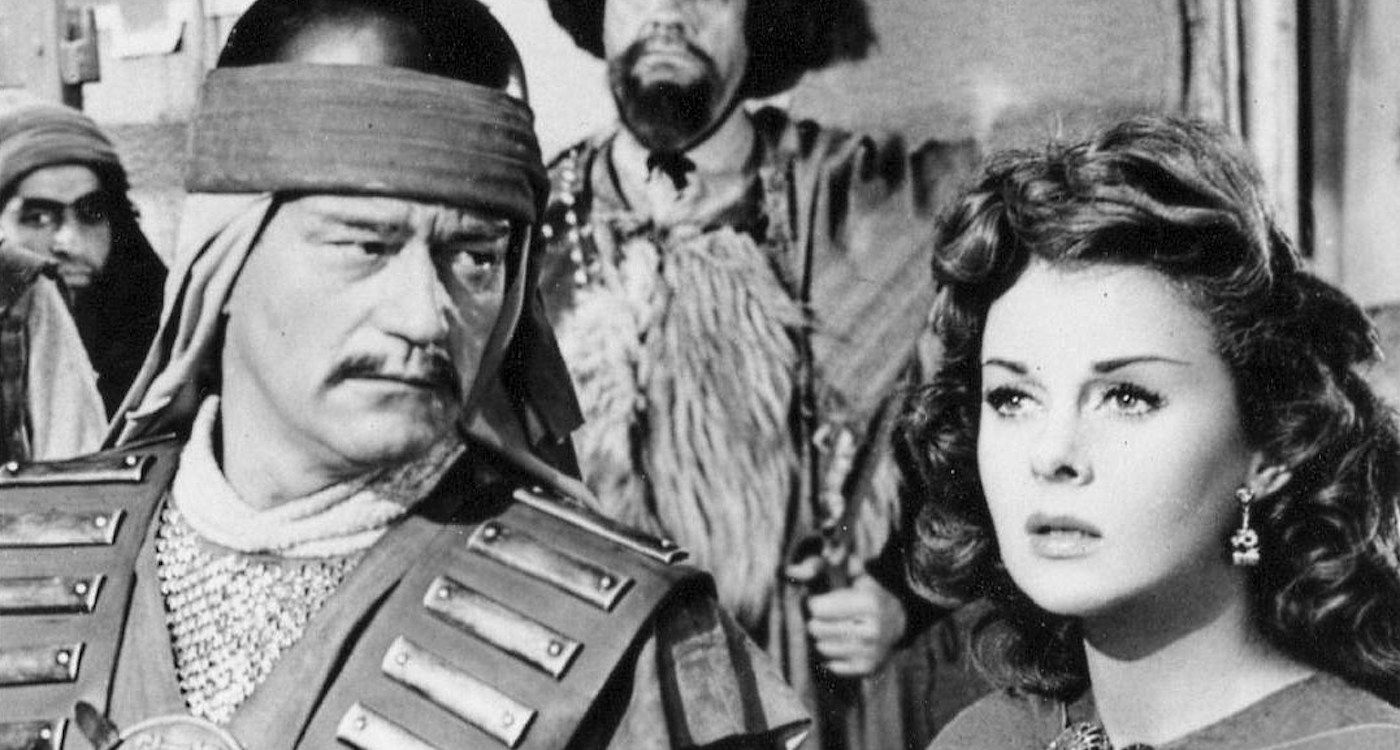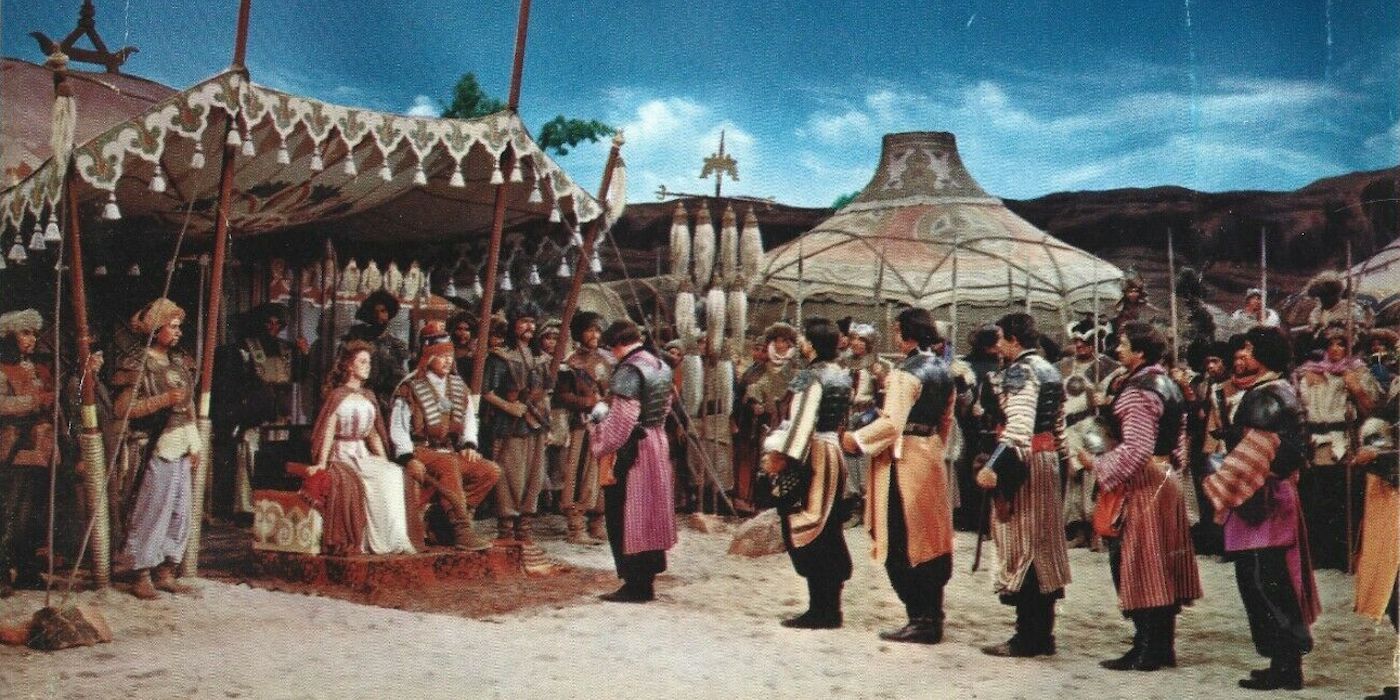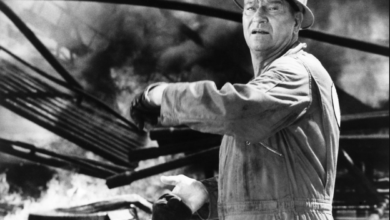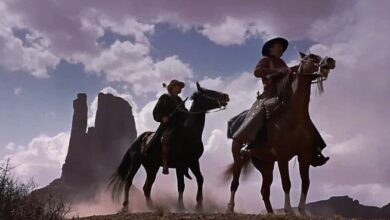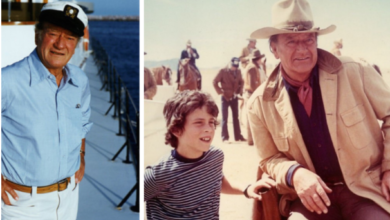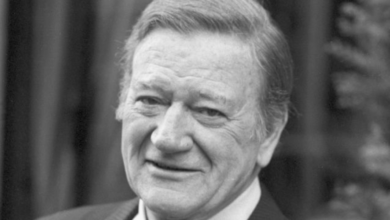The John Wayne Movie That Likely Killed Dozens of People
The story of one of the most disastrous Hollywood productions.
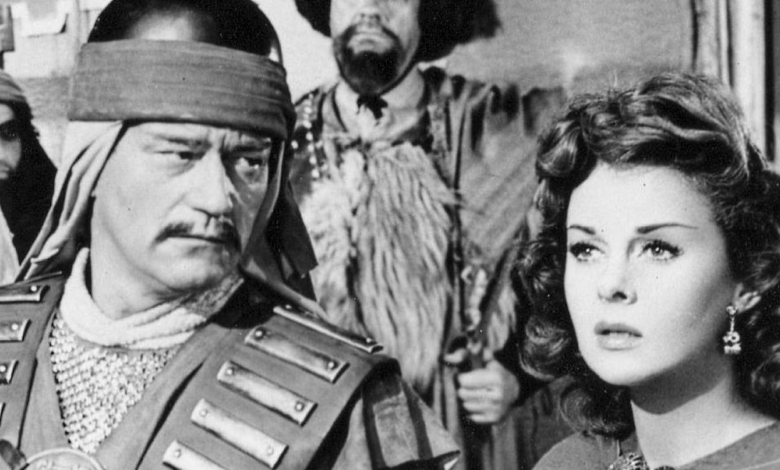
THE BIG PICTURE
- Some films with disastrous productions end up being truly special, while others don’t warrant the struggles endured by the cast and crew.
- The Conqueror, considered the worst film of the 1950s, suffered from a toxic working environment and was filmed near a nuclear test site.
- Out of the 220 cast and crew members, 91 developed cancer and 46 died, likely due to exposure to nuclear fallout during the shoot.
“This better be worth it.” Sometimes it’s more about the journey than the destination, but when it’s a journey through hell, you hope the destination will make up for what you’ve been put through. The same question can be asked in the history of film production, because we all know about the movies that were “cursed.” So many films had disastrous productions with overblown budgets, delay upon delay, and worst of all, casualties among the cast and crew, from psychological distress to, unfortunately, deaths. John Wayne‘s The Conqueror is a problematic movie in more ways than one, with the 1956 picture being one of Hollywood’s worst productions.
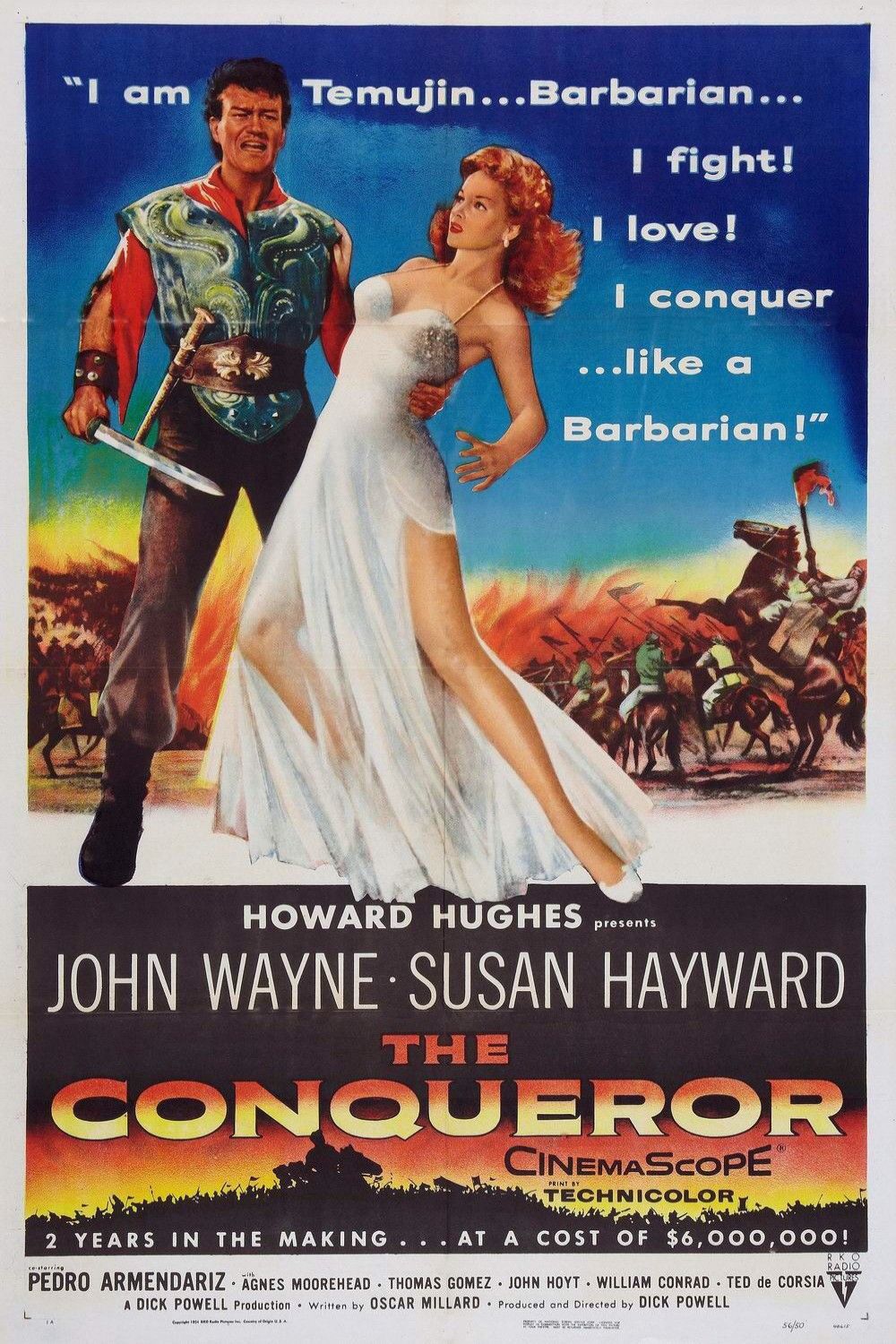
The Conqueror
Mongol chief Temujin battles against Tartar armies and for the love of the Tartar princess Bortai. Temujin becomes the emperor Genghis Khan.
Not All Stressful Movie Productions Are Worth It
So, you ask: Was it all worth it? Sometimes, all the agony and disasters end up with a final product that is truly special, even world-changing, such as The Wizard of Oz. Sometimes, a movie is still good or even great, but you wonder if it was worth all the cast and crew endured. Other times, like in Waterworld’s case, a really difficult and expensive shoot wasn’t worth it critically or financially. And in certain, horrible cases, not only did the final product fail miserably, but the bad decisions of those on top and the long-term effects it wrought on the cast and crew, made it never worth the risk at all.
It was the late 1950s, and everyone was all about the big, expensive sword-and-sandals epics. Throw a bunch of A-Listers, thousands of unnamed extras, and a bunch of horses in the middle of the desert and adapt a classic story of historical, mythological, or biblical proportions. This really kicked off in the early 1960s with films such as Spartacus and Cleopatra, but in 1956, the world was graced with one of the best in the genre, The Ten Commandments, and the very same year gave us one of the worst.
John Wayne Shouldn’t Have Been Cast in ‘The Conqueror’
The Conqueror, directed by Dick Powell and produced by Howard Hughes, follows the origin story of the infamous Mongol emperor, Genghis Khan, then called Temüjin. Such a significant figure in history would require the perfect man to play him, though the man chosen was John Wayne. Yes, The Duke, the eternal cowboy, playing Genghis Khan. This is the fact that people don’t believe when first hearing it. Having white actors in offensive makeup play Asian characters wasn’t new, just an unfortunate reality of film history, but… John Wayne, really? That was considered a horrible miscast even back then. Marlon Brando, another actor with a staggeringly distinct look and voice, was originally slated for the role but backed out of the project. A much better choice, East-Russian-born Yul Brynner, had a more promising movie to do (The Ten Commandments), and they were both incredibly lucky they missed out.
The Conqueror is considered the worst film of the 1950s. At least Plan 9 From Outer Space is fun, and mercifully short, but The Conqueror is nearly two glacial hours long and takes itself deadly seriously. It is insulting and historically inaccurate – and just overall embarrassing. So, Howard Hughes blew about $6 million (that’s $65,993,382.35 today) on a terrible movie. What’s the big deal? Bigger budgets have been spent on worse movies, and it made that money back. However, a bad movie would become the least of the cast and crew’s worries.
‘The Conqueror’s Production Fought Mother Nature
The Conqueror is considered a cursed movie by many, and it has the regular pitfalls of any film given that description: going over budget, getting delayed, and conflicts between, well, mostly Hughes and everyone else. But this film is considered more cursed than most, with the effects being far-reaching and lasting many, many years. This was no curse brought on by higher powers like, allegedly, the cursed production of The Exorcist. This wasn’t some product of supernatural meddling, because this film didn’t just have a toxic working environment… it had an irradiated one.
If a dysentery-stricken Harrison Ford, the million-dollar insurance policies of The Mummy, and the testimony of many, many actors can teach us anything, it’s that shooting in a desert anywhere in the world sucks. Nature is out to get you in the middle of nowhere. You have to fight with the blistering heat and potentially dangerous animals, all while dealing with the regular stressors that pop up on a film set. Nature doesn’t compromise, nature doesn’t cooperate, and nature doesn’t care about your movie. Why should it? According to Harry and Michael Medved‘s book, Hollywood Hall of Shame, The Conqueror made for a grueling shoot for that reason alone: water sources dried up and people fainted from heatstroke, but it was pushed over the edge from grueling to genuinely dangerous by the particular desert they decided to use for filming.
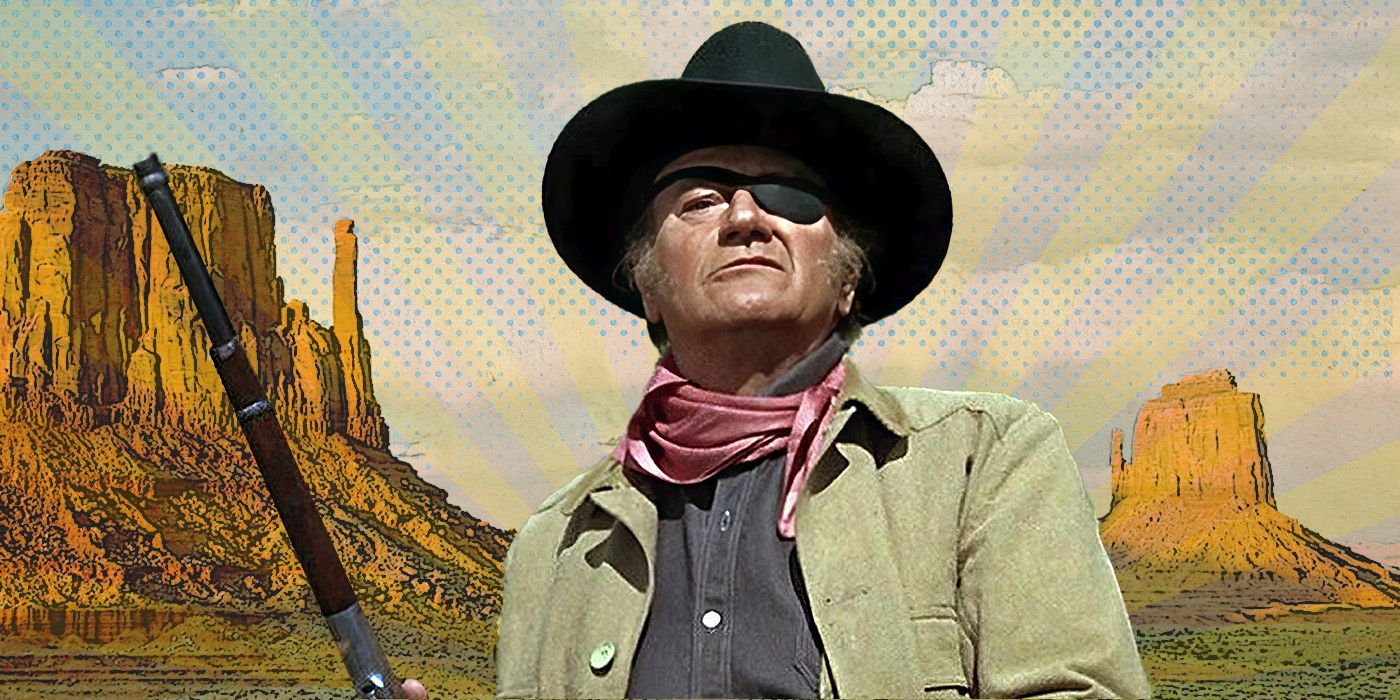
The Conqueror, while set in The Gobi Desert, was filmed primarily in the plains of Utah, Snow Valley, Pine Valley, Leeds, Harrisburg, with the outdoor scenes being shot in the Escalante Desert. The outdoor scenes, as in any desert shoot, were the most dangerous, but 137 miles downwind from where the cameras were rolling was the Nevada National Security Site, otherwise known as The Nevada Test Site. It was the 1950s, meaning the Cold War was quickly heating up and this site was a prime location for testing nuclear weapons of mass destruction. According to John G. Fuller‘s book, The Day We Bombed Utah, the health effects of nuclear fallout, no matter how small the exposure, is devastating, with many “down-winders,” particularly from the city of St. George, suffering from cancer because of it. The filmmakers knew about these tests, 11 of them occurring in 1953 with the shoot beginning only a year later, but were assured by the government that they were safe to continue the production.
John Wayne’s ‘The Conqueror’ Leaves Behind a Horrible Legacy
Out of the 220 cast and crew members counted, 91 of them ended up developing a wide range of cancers in the next couple of decades, and 46 of them ended up succumbing to the disease. Among the fatalities were Powell, Wayne, and stars Susan Hayward and Pedro Armendáriz. This number does not account for the primarily Native American extras in the film, which likely means the number of humans affected was much higher. Obviously, there are other reasons that one would get cancer in the 1950s. Almost everyone, for example, smoked. But having almost half the cast and crew of the same film all succumbing to a disease that is caused by nuclear fallout seems like a pretty big coincidence. All of them spent months downwind of a nuclear test site, breathing the air, drinking the water, and touching the dirt not only there, but in re-shoots when Hughes insisted it be imported in.
Shockingly, no one got served for this horrific and damaging misstep; not Hughes, not Powell, not RKO Radio Pictures, not the government. According to Darwin Porter‘s book, Howard Hughes: Hell’s Angel, that guilt really set in for Howard Hughes, and when he began to spiral into obsessive compulsiveness, he hoarded every print of The Conqueror, one of the films he’d watch repeatedly until his death in 1976. There is far more of this story to tell and is told in books such as Killing John Wayne: The Making of The Conqueror, which is worth its own movie. Heck, you’re better off reading those books than watching The Conqueror.

